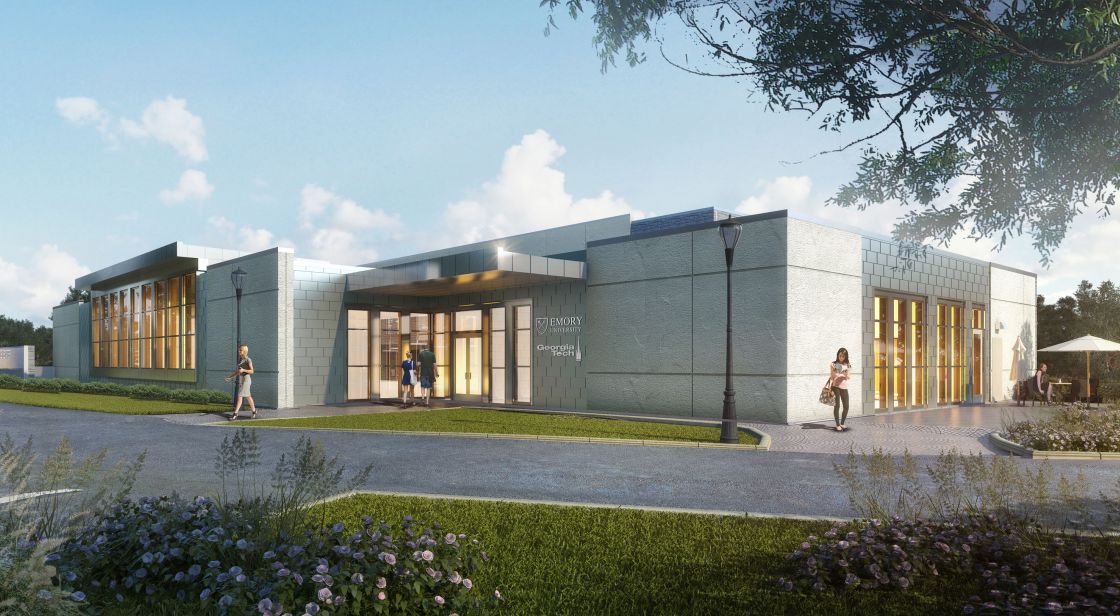Thousands of items are added to libraries’ collections each year. Whether a university or public library, chances are that premium space is limited, yet collection expectations and demand for materials remain high. Where can these compendia be housed, yet still be readily accessible? The increasingly popular answer? High-capacity, climate-controlled off-campus library storage, whereby less circulated assets are sent to alternate housing, liberating prime shelving for the more popular, heavily rotated items.
But beyond a system that creates efficiencies in asset storage and retrieval, the progression and adoption of off-campus library storage supports a larger paradigm shift in education— that which enables a library to evolve from a static materials warehouse into an active, dynamic place of experiential, participatory, and resource-rich learning.
A project of this type begins with site selection: ideally, a location of more reasonable real estate cost, but in close enough proximity to the main library that assets can be retrieved and delivered with expediency— ultimately within a day. Loss prevention insurance drives the physicality of the building. Factory Mutual requirements regarding fire protection determine construction technologies and demand the compartmentalization of assets to minimize loss. KSS, in conjunction with FM Global, has expanded and improved upon existing models to increase a module’s capacity by square feet and by vertical height.
“Archiving standards” are met via temperature and humidity control. In addition to achieving an ideal storage environment, this optimized climate becomes additionally appropriate for the restoration and preservation of highly valued materials. So expertly and stringently have these modules been built that they are regarded as “hundred year” buildings, and have come into high demand— not just for books, but for people, too. The popularity of off-campus climate-controlled storage has driven the need for increased man-power in the processing of assets to and from the building, and to support teams of preservationists who carry-out critical restoration work in-situ. Modules now take into consideration the housing of people as well as printed materials.
Sustainability has a large role to play in off-campus library storage—buildings with such sophisticated elements tend to use a lot of energy—why not have the modules produce their own? These buildings are designed to utilize high-performance envelopes, LED or motion sensitive lighting systems, and are prime candidates for photovoltaic solar arrays. Once fitted-out, they become modules working hard to off-set energy costs while protecting their contents.
A last key element in off-campus library storage might be its most impactful—and not one found in an insurance policy—that of strategic partnership. Where opportunities abound to preserve and protect assets —this storage system, when approached in partnership with another library entity, can double or triple a library’s access to valuable collections. In effect, creating a joint venture that benefits end users by providing exponential access to additional resource materials. While it might make sense to house like-collections, it is the further reaching effect of complimentary collections that open worlds of new books to library users.
Partnerships already underway include ReCap (the Research Collections and Preservation Consortium): an amalgamation of Princeton University, Columbia University, and the New York Public Library. Located on the Forrestal Campus of Princeton University, a recently added fifth module increased ReCAP’s total area to 85,000 square feet with a capacity of 10 million items. EmTech represents the to-be stored collections of Emory University and Georgia Tech. Ground was broken in the fall of 2014.
Increased capacity to store materials off-campus, optimum climate to restore and preserve rare collections, and exponentially increased access to knowledge— in the world of high-capacity asset storage, the humble library card has become quite powerful.
Technical Details:
- Emory University and The Georgia Institute of Technology are constructing a shared high-density storage facility for circulation and special collections material. The conceptual design includes 35-foot high shelving accessible via a man aboard lift. It is the first phase of an anticipated multi-phase project.
- As is typical in this type of facility, the building envelope is a key component in the system maintaining critical interior conditions. Special study of the envelope is required to ensure that in addition to insulation, a high degree of moisture protection and longevity is achieved. The spaces are finished using vapor tight materials including a painted structural ceiling and high performance air barrier interior finishes.
- Building slab systems include a requirement for a super-flat floor as well as other important performance criteria to meet the demands of the material handling systems.
- The mechanical system for a storage module is required to maintain 50˚F +/‐ 2.5˚F with corresponding 35% +/- 5% relative humidity throughout the year. Custom air handling units utilizing desiccant dehumidification and multiple compressors are utilized. Gas and high level particulate carbon filtration for contaminant removal are also required. The selection of industrial automation sensors and components is required to measure and maintain space conditions.
- Typical HVAC systems are provided for an office component with special concern for transfer air and temperature and humidity migration to the storage modules.

